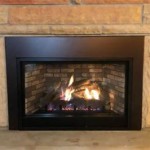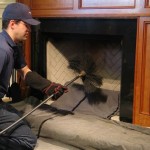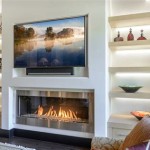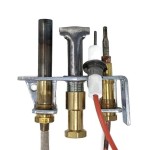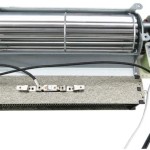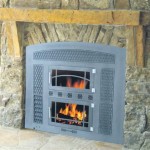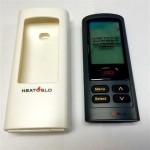```html
Natural Gas Fireplace Inserts: Understanding Vent-Free Options
Natural gas fireplace inserts offer a convenient and efficient way to upgrade an existing fireplace or add supplemental heating to a room. Among the various types available, vent-free models present a unique set of advantages and considerations. This article provides a comprehensive overview of natural gas vent-free fireplace inserts, exploring their functionality, benefits, safety aspects, installation requirements, maintenance needs, and regulatory compliance issues.
Vent-free, also known as ventless, natural gas fireplace inserts are designed to operate without the need for a chimney or external venting system. This differentiates them from traditional gas fireplaces and other insert types that require a flue to exhaust combustion byproducts. The absence of a vent simplifies installation and expands placement options within a dwelling. However, it also necessitates careful consideration of indoor air quality and adherence to strict safety standards.
The operational principle of a vent-free natural gas fireplace insert centers on highly efficient combustion. These inserts are engineered to completely burn the natural gas fuel, minimizing the production of harmful emissions like carbon monoxide and nitrogen dioxide. The design typically incorporates an oxygen depletion sensor (ODS) that monitors the oxygen levels within the room. If the oxygen level drops below a predetermined threshold, the ODS automatically shuts off the gas supply, preventing the buildup of carbon monoxide. This safety feature is crucial for ensuring safe operation in enclosed spaces.
The heat generated by a vent-free natural gas fireplace insert is primarily radiant heat, meaning it directly warms objects and people in the room, rather than heating the air. This type of heat is often perceived as more comfortable and energy-efficient compared to forced-air heating systems. The radiant heat also contributes to a more consistent temperature throughout the room.
Key Point 1: Advantages of Vent-Free Natural Gas Fireplace Inserts
Several advantages contribute to the appeal of vent-free natural gas fireplace inserts. A primary benefit is the simplified installation process. Without the requirement for a chimney or venting, installation is generally less expensive and less disruptive compared to vented models. This makes them a suitable option for homes without existing fireplaces or for homeowners seeking to avoid the costs and complexities associated with chimney construction or modification.
Another advantage lies in the increased efficiency of vent-free inserts. Because all the heat generated during combustion is released into the room, there is minimal heat loss through a chimney or vent. This translates to higher overall energy efficiency and potentially lower heating bills. The efficiency ratings of vent-free inserts are typically higher than those of vented models.
Vent-free inserts offer flexibility in terms of placement within a home. They can be installed in rooms where a traditional fireplace or vent is not feasible. This opens up possibilities for adding supplemental heating to bedrooms, basements, or other living areas. The compact design of many vent-free inserts further enhances their versatility.
Aesthetic appeal is another factor to consider. Vent-free inserts are available in a variety of styles and finishes to complement different home décor. Some models feature realistic flame patterns and ember beds, creating a visually appealing focal point in the room. The inserts can be customized to match existing fireplace surrounds or integrated into new construction projects.
Key Point 2: Safety Considerations and Requirements
The safety of vent-free natural gas fireplace inserts is paramount, and stringent standards are in place to mitigate potential risks. The Oxygen Depletion Sensor (ODS) is a critical safety feature that monitors oxygen levels and automatically shuts off the gas supply if the levels become too low. This prevents the accumulation of carbon monoxide, a colorless and odorless gas that can be fatal.
Proper installation is essential for safe operation. Vent-free inserts should be installed by qualified professionals who are familiar with local building codes and manufacturer's instructions. The installation process includes ensuring adequate ventilation in the room, verifying gas line connections, and testing the ODS system.
Adherence to clearance requirements is also crucial. Vent-free inserts must be installed with sufficient clearance from combustible materials, such as walls, furniture, and drapes. These clearances are specified by the manufacturer and must be strictly followed to prevent fire hazards. Regular cleaning and maintenance are necessary to ensure proper operation and prevent the buildup of dust or debris that could obstruct the burner or ODS system.
It is important to understand the limitations of vent-free inserts. They are designed for supplemental heating and should not be used as the primary source of heat in a dwelling. Prolonged use in a poorly ventilated room can lead to a buildup of moisture and other combustion byproducts, potentially affecting indoor air quality. Carbon monoxide detectors should be installed and maintained in homes with vent-free appliances to provide an early warning in case of a malfunction.
Key Point 3: Installation, Maintenance, and Regulatory Compliance
The installation of vent-free natural gas fireplace inserts typically involves several steps. First, the existing fireplace opening must be prepared to accommodate the insert. This may involve removing existing components, cleaning the firebox, and ensuring that the structural integrity is sound. The gas line connection must be properly sized and installed by a qualified plumber or gas fitter. The insert is then carefully positioned within the firebox and secured in place.
Following installation, the insert must be tested to ensure that it is operating correctly and that the ODS system is functioning properly. The installer should also provide the homeowner with instructions on how to operate and maintain the insert. Regular maintenance tasks include cleaning the burner, inspecting the ODS system, and checking for gas leaks.
Regulatory compliance is an important aspect of vent-free natural gas fireplace inserts. These inserts must meet specific safety standards and be certified by recognized organizations, such as the American National Standards Institute (ANSI) or the Canadian Standards Association (CSA). These certifications ensure that the inserts have been tested and meet rigorous safety requirements. Building codes may also regulate the installation and use of vent-free appliances.
Some jurisdictions may have restrictions or prohibitions on the use of vent-free appliances. Homeowners should check with their local building department or fire marshal to determine the applicable regulations in their area. These regulations may vary depending on the type of dwelling, the size of the room, and other factors. Failure to comply with these regulations can result in fines or other penalties.
In addition to building codes, the manufacturer's instructions must be strictly followed. The instructions provide detailed information on installation, operation, and maintenance, and are essential for ensuring safe and efficient use of the vent-free insert. Ignoring these instructions can void the warranty and potentially create safety hazards.
The long-term performance and safety of a vent-free natural gas fireplace insert depend on proper installation, regular maintenance, and adherence to regulatory requirements. Homeowners should be aware of the potential risks associated with these appliances and take the necessary precautions to ensure their safe operation. Consulting with qualified professionals and staying informed about the latest safety standards are essential for maximizing the benefits of vent-free heating while minimizing potential hazards.
In summary, choosing a vent-free natural gas fireplace insert requires careful consideration of various factors, including the advantages of simplified installation and increased efficiency, the safety considerations related to indoor air quality and proper operation, and the importance of adhering to installation guidelines, maintenance schedules, and local regulations. A well-informed decision will result in a safe and efficient supplemental heating solution for the home.
```
Vent Free Inserts White Mountain Hearth
:max_bytes(150000):strip_icc()/ventless-gas-fireplaces-4160746-hero-f9d4bdcd9bd446eb84406de306f790ba.jpg?strip=all)
How To Pick Out A Ventless Gas Fireplace

Duluth Forge 27 In W 26000 Btu Black Vent Free Dual Burner Gas Fireplace Insert The Inserts Department At Com

Duluth Forge 36 In Ventless Dual Fuel Fireplace Insert With Remote Control Fdi32r The Home Depot

Vent Free Gas Fireplaces Inserts Stoves Napolis Godby Hearth And Home

Procom 26 000 Btu Vent Free Dual Fuel Propane And Natural Gas Indoor Fireplace Insert With T Stat Control 170082 The Home Depot

Gas Fireplaces Inserts And Stoves N Fixin S

Cozy And Efficient Propane Gas Fireplace Inserts

Empire Small Vent Free Fireplace Insert Fine S Gas

Natural Gas Fireplace Stones Vent Free European Home Contemporary Open Hearth Standing
Related Posts

